The Acropolis Museum, Athens

It’s impossible to over-emphasize just how important the newly built Acropolis Museum is to the Greek people. Suffice to say that on approaching the brand new £110 million construction my companion for the day, Tina Daskalantonaki, owner of Athen’s King George Hotel, was in tears.
Opening five years behind schedule, the Acropolis Museum is situated on the sacred rock East of the Parthenon and houses the greatest sculptural treasures of the ancient world including works from the temple of Athena Polias on the Acropolis and parts of the Parthenon by Phidias.
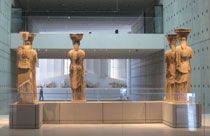
Have a look round the brand new £110 million Acropolis Museum
Designed by Swiss American architect Bernard Tschumi, the glass, concrete and steel building is impressive enough from the outside. But, as you move through the courtyard to the entrance, the real strengths of the building become clear.
A glass floor, allowing a bird’s eye view of the recently excavated remains of the merchant city of Athens beneath, leads you into the building and onto the ground level past glass lined walls behind which stand 2,500 year old vases and sculptures.
On the first floor is the towering Archaic gallery. Marble sculptures on open plinths sparsely populate the area like patrons of an unsuccessful nightclub while the glass cases that usually surround such priceless artifacts are conspicuous by their absence.
The space is defined by dove grey brushed concrete pillars and walls, geometric overhead light panels and stainless steel wall cabinets while massive windows allow great gobs of natural light to flood the area. It is the perfect setting for the museum’s artifacts.
Wallpaper* Newsletter
Receive our daily digest of inspiration, escapism and design stories from around the world direct to your inbox
And then there’s the glorious top floor which houses what is left of the Parthenon’s sculptures and friezes floor not chiseled off or ‘rescued’ by Lord Elgin, between 1801 and 1812, and hauled to the British Museum. In their place the Acropolis Museum, maybe in an effort to bring the British government to task, has placed the rather substandard plaster cast replicas - sold to them after independence in the 1840s by the British Museum - next to their originals.
The British Museum has long maintained that Greece had no proper place to put the ‘Elgin’ Marbles. The Acropolis Museum is a serious challenge to those claims.
ADDRESS
15 Dionysiou Areopagitou Street
Athens 11742
-
 ‘100R’ by Hydro invites top designers to work in revolutionary recycled aluminium
‘100R’ by Hydro invites top designers to work in revolutionary recycled aluminiumHydro’s ‘100R’ exhibition at Milan Design Week 2024 matches designers including Inga Sempé and Max Lamb with Hydro CIRCAL 100R, the first industrial-scale aluminium material made entirely of post-consumer scrap
By Simon Mills Published
-
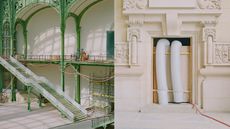 Grand Palais restoration in Paris through the lens of champion fencer Enzo Lefort
Grand Palais restoration in Paris through the lens of champion fencer Enzo LefortAs Paris’ Grand Palais prepares to reopen following extensive restoration by Chatillon Architectes, we visit the site with champion fencer and photographer Enzo Lefort, who documented the space ahead of the Olympic Games 2024
By Ellie Stathaki Published
-
 Lap-See Lam’s giant dragon head and tail takes over the Nordic Pavilion at the Venice Biennale
Lap-See Lam’s giant dragon head and tail takes over the Nordic Pavilion at the Venice BiennaleLap-See Lam takes over The Nordic Pavilion with a giant dragon head and tail, while her dynamically composed ‘Altersea Opera’ considers language and representation
By Emily Steer Published
-
 Residence in Dionysos was conceived as a minimalist ‘cave refuge’ outside Athens
Residence in Dionysos was conceived as a minimalist ‘cave refuge’ outside AthensResidence in Dionysos by Desypri & Misiaris Architecture is a family home designed as a minimalist refuge among the surrounding nature's pine tree-filled slopes
By Ellie Stathaki Published
-
 This Greek villa's superyacht aesthetics conceal two self-contained family residences
This Greek villa's superyacht aesthetics conceal two self-contained family residencesA Greek villa in the upscale Athens suburb of Filothei, House Symbiosis is home for two sibling families, designed in white, sweeping volumes by Direction Architects
By Jonathan Bell Published
-
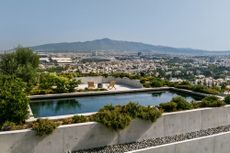 A Filothei house rises to the occasion in its angled Athens plot
A Filothei house rises to the occasion in its angled Athens plotA Filothei house by Kallos Turin is an Athens residence rising to the occasion on an angled plot
By Ellie Stathaki Published
-
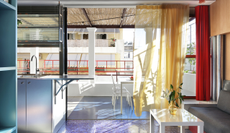 This colourful Athens apartment takes small space living to a new level
This colourful Athens apartment takes small space living to a new levelPocketed away on a residential street, this colourful Athens apartment smartly utilises every inch of its footprint with segmented flooring and rich textural design
By Tianna Williams Published
-
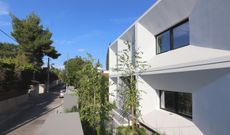 KKMK, Greece: Wallpaper* Architects’ Directory 2023
KKMK, Greece: Wallpaper* Architects’ Directory 2023The Wallpaper* Architects’ Directory 2023's newest entry is Greek studio KKMK, behind projects such as this minimalist haven in Athens’ Psychiko
By Ellie Stathaki Published
-
 Syros house is conceived like a small Greek island village
Syros house is conceived like a small Greek island villageThis Syros house by architects Block722 is a holiday home in Greece, designed like a small island village
By Ellie Stathaki Published
-
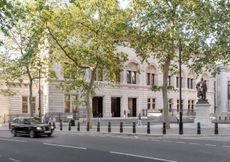 National Portrait Gallery reopens its refreshed home
National Portrait Gallery reopens its refreshed homeLondon’s National Portrait Gallery reopens with a design by leading architect Jamie Fobert and conservation specialist Purcell
By Ellie Stathaki Published
-
 A Kythnos Island house offers a 21st-century take on the local vernacular
A Kythnos Island house offers a 21st-century take on the local vernacularA Kythnos Island house, Piperi, is a contemporary Greek home by Sigurd Larsen drawing on its location's vernacular
By Ellie Stathaki Published